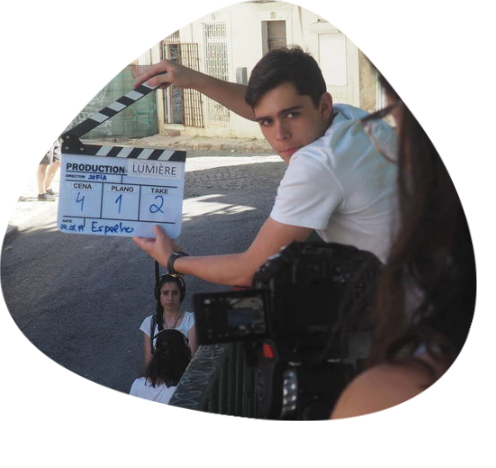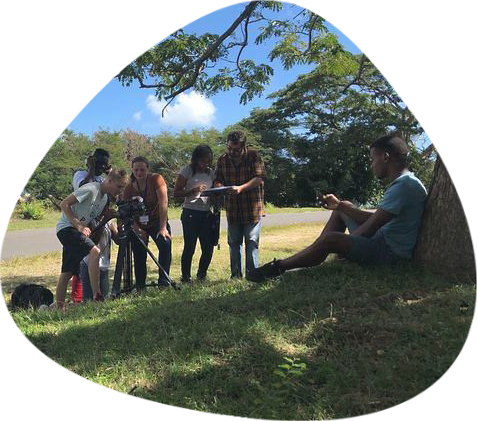Film making and Film Education
Introducing creative approaches to film.

Introducing creative approaches to film.

In this section you will be asked to make tiny 1 minute films in the style of the Lumiere Brothers; look at work made by young people as part of Cinema cent ans de jeunesse, an international programme that has been running for 25 years; and think of some of the reasons why young people screening their films in cinemas is a good thing.
The next sequence of steps are focused on the role of practical engagement with film: why, and how, we use creative activities with learners, and how we connect them to the other ‘Cs’ of film education: the Critical and the Cultural. These steps are produced by the Cinémathèque Française in Paris.
This step begins with a question: ‘Why should we introduce practice in cinema education ?’ To answer, we will refer to a pioneer experiment that has been led by the Cinémathèque française for more than 25 years; It is called “Cinéma, cent ans de jeunesse” (CCAJ) / “Cinema, hundred years young”, as this programme was created to celebrate the first century of cinema, in 1995.
CCAJ allows groups of young people between the ages of 6 and 18 across the world to take part in a unique cinematic experience, combining the discovery of cinema with a rigorous approach to filmmaking focused around a different question of cinema chosen every year.
Each year it sets up workshops in schools and extracurricular environments where young people get the chance to work with cinema practitioners on a regular basis. The sessions mix the watching of film excerpts in class with practical exercises, culminating in the making of a short film created by the group itself. Altogether, it offers an educational experiment of cinema which combines the sharpening of perception with the creative experience.
We refer back to the Framework for Film Education, and the importance of connecting the ‘three Cs’ of creative, critical and cultural work in film. (link to the framework pdf you already have)

In CCAJ, we believe that cinema education should link talking about films with filmmaking, to develop a film sensibility and enlarge expression.
Creative practice is a very effective way to open students’ eyes on their immediate environment, to see (and hear) it in new ways (when it is represented by film) and to discover how interesting it can be for others. Creative practice also enables learners to become subjects - of stories that are worth telling; creative practice enables children to transform what might seem uninteresting to them, trivialized by habit, into something fresh and new.on”. Consider which means are required in order to create a feeling of isolation: location, camera angles, editing, etc.
Creative practice helps students become active spectators, helping them experience the world for themselves. In this case, experiencing is not only making images - as many young people do (mostly for communication and social networks) - but becoming aware of all the choices you can make when you really question and have to find your own point of view, at the same time becoming aware of choices made by filmmakers whose films you see.
Individual (for instance, with exercises), so that each learner can be personally engaged, but also collective, a learning by doing-together, learning collectively to make a film. We believe that cinema is not and should not be just like other ordinary school subjects, and that it is important to introduce as soon as possible the point of view of cinema professionals (filmmakers, technicians…) to allow an artistic experience with students.
What is your view on the relationship between watching, analysing, and making film? Have you used practical activities with students? What was the purpose, and what were the learning outcomes? Write your ideas in the Notepad below.
Use this notepad feature to write down answers and your thoughts to questions posed throughout this resource.
Open Notepad